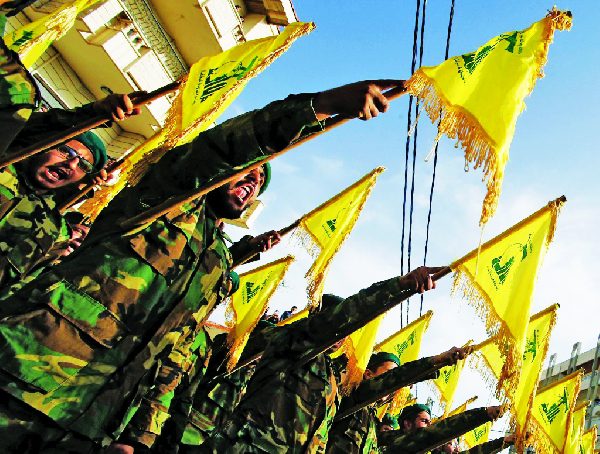
On May 25, Lebanon marked one year without a president — the longest stretch where the country’s top post has been vacant since the Lebanese civil war ended in 1990.
Since former President Michel Sleiman’s term in office ended last year, the Lebanese Parliament, which is responsible for appointing the president, has met 24 times and failed to elect a new head of state. The Lebanese political system functions on deals struck between its many political parties and religious sects — and their foreign backers. But consensus has been elusive as the most powerful blocs lined up behind opposing sides in the civil war in neighboring Syria. Hezbollah, Lebanon’s dominant Shi’a political party and militia, has dispatched thousands of fighters to help Bashar al-Assad’s regime, while Hezbollah’s Sunni opponents send funds and volunteers to Syrian rebels and jihadists.
Each Lebanese faction accuses the other of serving external masters — and they’re right. Indeed, Lebanon is part of the ongoing proxy war in the region — pitting Iran, which supports Hezbollah and its Christian allies, against Saudi Arabia and other Sunni Arab regimes, which back a coalition of Sunni and Christian parties. While Iran and Saudi Arabia are still heavily involved in Lebanon, the two powers are more focused on their proxy conflicts in places where, at the moment, the stakes are higher: Syria, Iraq and Yemen.
And while external players have a hand in Lebanon’s latest political paralysis, they do not deserve all the blame. For the most part, the Lebanese did this to themselves, and they need to find a political settlement of their own. Otherwise, the Sunni-Shi’a rift in Lebanon could explode, especially since it has been fueled by a decade of sectarian bloodletting in Iraq and, more recently, Syria.
Today, Lebanon is limping along, as it has for much of the past decade, since the assassination of former Prime Minister Rafik Hariri in February 2005. Because of the Syrian conflict next door and political gridlock over the presidency, parliamentary elections that are supposed to take place every four years have been delayed until 2017 at the earliest. Twice since their four-year terms expired in 2013, Lebanese lawmakers voted to simply keep themselves in office. That undermines the basic building blocks of one of the few countries with a tradition of democratic elections in a region dominated by strongmen and monarchs.
Hezbollah, which has always portrayed itself as a nationalist and pan-Islamic movement committed to fighting Israel, already lost much of its credibility in the Sunni Arab world for fighting alongside Assad’s brutal regime. The group is engaged in wars on two fronts: It is fighting insurgents in Syria, and trying to contain spillover attacks from the Nusra Front — al Qaeda’s affiliate in Syria — and other jihadist groups that have taken the battle inside Lebanon.
The political stalemate is scaring away international donors who are needed to help the Lebanese government deal with a massive influx of more than 1 million Syrian refugees. The Lebanese presidency is also important for symbolic reasons: the post is set aside for a Christian and so Lebanon has the only non-Muslim head of state in the Arab world.
More broadly, political deadlock in Lebanon can quickly devolve into sectarian violence. The last impasse over a government went on for 18 months. During that time, Lebanon was without a president for six months — and the parliamentary vote to choose a new head of state was postponed 19 times. The stalemate was finally broken when Hezbollah ignited the worst internal fighting since the end of Lebanon’s civil war.
Lebanon’s problems are rooted in a 1943 power-sharing agreement installed when the country won its independence from French colonial rule. The system was designed to keep a balance among 18 sects, dividing power between a Maronite Christian president, a Sunni prime minister and a Shi’a speaker of parliament.
The division was based on a 1932 census, which showed Maronites as the majority in Lebanon. Since then, the government has refused to hold a new census. By the 1960s, when Muslims began to outnumber Christians, Muslims clamored for change in the balance of power. When civil war broke out in 1975, the political imbalance helped drive the major sects to form their own militias. Because of the sectarian system, Lebanese political institutions never got a chance to develop; the country remained dependent on the powerful clans and feudal landlords that held sway in much of Lebanon. The zaeem, or sectarian leader who usually inherited rule from his father, became paramount during the war.
All factions in Lebanon constantly affirm that they will abide by Taif, elevating the document to the status of a Magna Carta. Yet few acknowledge that the agreement also called for eventually abolishing the sectarian system, although it gave no timeframe for doing so.
The sectarian political structure leads to a weak state. It encourages horse-trading and alliances with powerful patrons. And it is easily exploited by outside powers, including Syria, Iran and Saudi Arabia. But most of the current players are too invested in this system to really change it. And foreign patrons do not want change, because that could reduce their influence.
Even if the various factions defuse the latest stalemate and reach a compromise on a new president, another political crisis is sure to emerge, unless Lebanon’s leaders — and its people — tackle the root causes of the country’s instability. Eventually, the Lebanese will have to decide what kind of country they want: one built on sectarian gerrymandering, or a more democratic way of sharing power. Otherwise, Lebanon will be dragged into the relentless cycle of sectarian violence sweeping the Middle East.






Leave a Reply